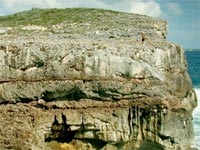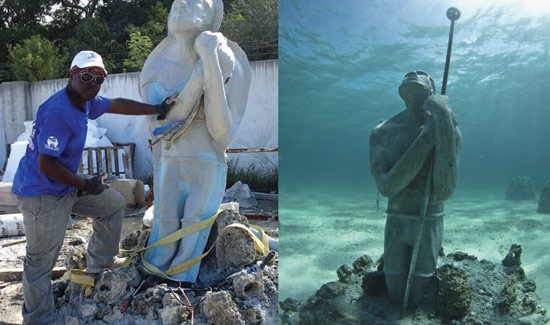
The seas are creeping higher as the planet warms. But how high could they go?
Projections for the year 2100 range from inches to several feet, or even more.
The sub-tropical islands of Bermuda and the Bahamas are two seemingly unlikely places scientists have gone looking for answers.
The cliffs and ancient reefs on Bermuda and the Bahamas have lured fossil-hunters for decades. The land on the Bahamas, for example, has a foundation of fossil coral; the stone is derived from the disintegration of age-old coral reefs and seashells.
These areas are now attracting scientists investigating global sea level rise.
By pinpointing where the shorelines stood on cliffs and coral reefs in the Bahamas and Bermuda during an extremely warm period 400,000 years ago, researchers hope to narrow the range of global sea-level projections for the future.
After correcting for what they say was sinking of these islands at that time, scientists estimate that the seas rose 20 feet to 43 feet higher than today–up to a third less than previous estimates, though still a drastic change.
The study infers that the Greenland and West Antarctica ice sheets collapsed during the ancient warm period, but that ice loss from the vast East Antarctic Ice Sheet was negligible.



